Related Research Articles
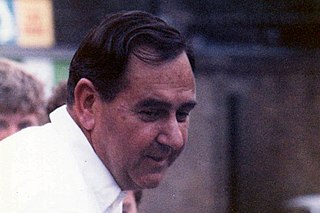
Michael Colin Cowdrey, Baron Cowdrey of Tonbridge, was an English cricketer who played for Kent County Cricket Club from 1950 to 1976, and in 114 Test matches for England from 1954 to 1975. He was born in Ootacamund, Madras Presidency, British India and died in Littlehampton, West Sussex.
John Augustine Snow is a retired English international cricketer who played for Sussex from 1961 to 1977 and represented England in 49 Test matches. He was born in Peopleton, Worcestershire.
Michael John Knight Smith, better known as M. J. K. Smith or Mike Smith, is an English double international, in cricket and in rugby union.

Albert Edwin Trott was a Test cricketer for both Australia and England. He was named as one of the Wisden Cricketers of the Year in 1899. He is believed to be the only batsman to have struck a ball over the top of the Lord's Pavilion. He is also one of only two players to take two hat-tricks in the same first-class innings, the other being Joginder Rao. Despite his notability, having played in 375 first-class matches including 5 Tests, he was almost penniless when he killed himself at the age of 41.

Arthur Edward Robert Gilligan was an English first-class cricketer who captained the England cricket team nine times in 1924 and 1925, winning four Test matches, losing four and drawing one. In first-class cricket, he played as an amateur, mainly for Cambridge University and Sussex, and captained the latter team between 1922 and 1929. A fast bowler and hard-hitting lower order batsman, Gilligan completed the double in 1923 and was one of Wisden's Cricketers of the Year for 1924. When his playing career ended, he held several important positions in cricket, including that of England selector and president of the Marylebone Cricket Club (MCC). A popular figure within cricket, he was widely regarded as sporting and friendly.
Greville Thomas Scott Stevens was an English amateur cricketer who played for Middlesex, the University of Oxford and England. A leg-spin and googly bowler and attacking batsman, he captained England in one Test match, in South Africa in 1927. He was widely regarded as one of the leading amateur cricketers of his generation who, because of his commitments outside cricket, was unable to fulfil his potential and left the game early.
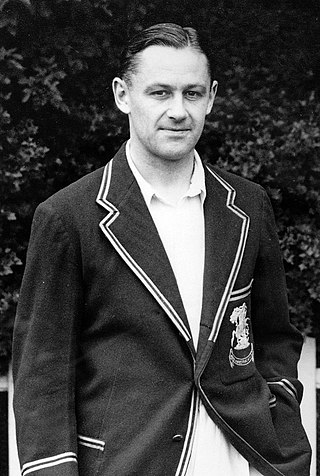
Sir George Oswald Browning "Gubby" Allen CBE was a cricketer who captained England in eleven Test matches. In first-class matches, he played for Middlesex and Cambridge University. A fast bowler and hard-hitting lower-order batsman, Allen later became an influential cricket administrator who held key positions in the Marylebone Cricket Club (MCC), which effectively ruled English cricket at the time; he also served as chairman of the England selectors.

Norman Walter Dransfield Yardley was an English cricketer who played for Cambridge University, Yorkshire County Cricket Club and England, as a right-handed batsman and occasional bowler. An amateur, he captained Yorkshire from 1948 to 1955 and England on fourteen occasions between 1947 and 1950, winning four Tests, losing seven and drawing three. Yardley was named Wisden Cricketer of the Year in 1948, and in his obituary in Wisden Cricketers' Almanack he was described as Yorkshire's finest amateur since Stanley Jackson.
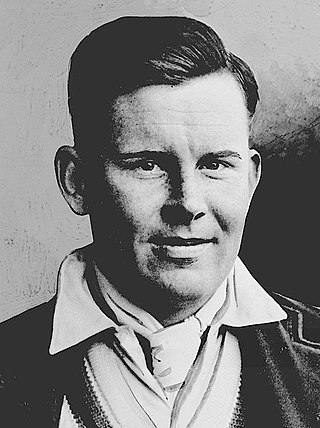
Frederick Richard Brown was an English amateur cricketer who played Test cricket for England from 1931 to 1953, and first-class cricket for Cambridge University (1930–31), Surrey (1931–48), and Northamptonshire (1949–53). He was a genuine all-rounder, batting right-handed and bowling either right-arm medium pace or leg break and googly.
Norman Gifford is a retired English cricketer, who played primarily as a left-arm spinner. Gifford played county cricket for Worcestershire, and Warwickshire County Cricket Clubs, and represented England in fifteen Test matches and two One Day International between 1964 and 1985.
Timothy Alan Munton is an English cricketer. He had a long career in county cricket, playing over 500 games combined between first-class and List A, primarily with Warwickshire before ending his career at Derbyshire. He also played two Test matches for England in the 1992 series against Pakistan, and went on a number of England A tours. A medium pace bowler and lower order batsman, cricket writer Colin Bateman stated, "at 6ft 6in, with an ability to make the ball swing, Munton is at his best in English conditions". His time at Warwickshire was a particularly successful one for the club, winning 6 trophies between 1993 and 1995; as a crucial part of that side, Munton was honoured as one of the five Wisden Cricketers of the Year in 1995.
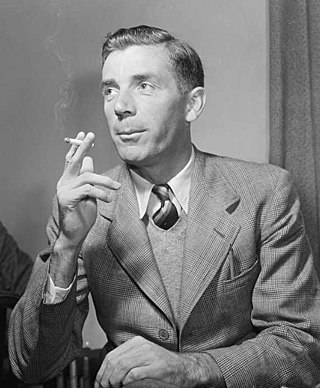
Douglas Vivian Parson Wright was an English cricketer. A leg-spinner for Kent and England from 1932 to 1957 he took a record seven hat-tricks in first-class cricket. He played for Kent for 19 seasons and was their first professional captain from late 1953 to 1956. Don Bradman said he was the best leg-spinner to tour Australia since Sydney Barnes, and Keith Miller thought he was the best leg-spinner he had seen apart from Bill O'Reilly. He toured Australia in 1946–47 and 1950–51, but was dogged by ill-luck and was considered to be the "unluckiest bowler in the world".
Cutting a leg-break is always dangerous, and cutting Wright is a form of suicide. Why a bowler of his skill failed to get more test-match wickets always mystified me; there was of course the marked tendency to bowl no-balls, but he sent down so many good ones, and worried and beat the batsmen so often, that he should have had better results...he seemed always likely to get wickets. It is one of the toughest problems of captaincy to know when to remove a man like that from the firing-line.

John James Warr was an English cricketer. A successful county player for Middlesex County Cricket Club, he took part in two Test matches for England. Warr was known for his sense of humour and made many humorous after-dinner speeches.
The English cricket team in Australia in 1946–47 was captained by Wally Hammond, with Norman Yardley as his vice-captain and Bill Edrich as the senior professional. It played as England in the 1946–47 Ashes series against the Australians and as the MCC in their other matches on the tour. They were regarded as a sound team which was just as strong as Australia, but due to World War II they were an ageing side and their bowling depended heavily on Alec Bedser and Doug Wright, who were overused and exhausted as a result. Australia beat England 3–0 in a five-match series to retain the Ashes; England suffered the worst defeat in a Test series since losing 4–1 to Australia in 1924–25. Since 1881, Tests in Australia were played to finish. That rule was changed for this series, and for the first time in 65 years, a test played in Australia ended in a draw when the third test was drawn.
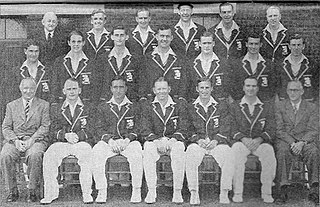
Freddie Brown captained the English cricket team in Australia in 1950–51, playing as England in the 1950–51 Ashes series against the Australians and as the MCC in their other matches on the tour. They were regarded as a weak team – some critics wanted to cancel the tour – and failed to regain the Ashes. However, these facts do not tell the whole story as the inspirational Brown exposed flaws in the powerful Australian team. By winning the Fifth and final Test he ended Australia's record of 26 Tests without defeat and paved the way for England's victories in 1953, 1954–55 and 1956.
Len Hutton captained the English cricket team in Australia in 1954–55, playing as England against Australia in the 1954–55 Ashes series and as the MCC in other matches on the tour. It was the first time that an England team had toured Australia under a professional captain since the 1880s. After losing the First Test by an innings, they beat Australia 3–1 and retained the Ashes. The combination of Frank Tyson, Brian Statham, Trevor Bailey, Johnny Wardle and Bob Appleyard made it one of the strongest bowling sides to tour Australia, and it was the only team of any nationality to defeat Australia at home between 1932–33 and 1970–71.
Peter May captained the English cricket team in Australia in 1958–59, playing as England in the 1958–59 Ashes series against the Australians and as the MCC in their other matches on the tour. It was widely regarded as one of the strongest teams to depart English shores, comparable with the great teams of Johnny Douglas in 1911-12 and Percy Chapman in 1928-29. It had no obvious weaknesses, and yet it was beaten – and beaten badly. By the First Test the top batsmen had made runs, the Surrey trio of Loader, Laker and Lock had taken wickets, as had Lancashire's Brian Statham. South Australia, Victoria and an Australian XI had all been beaten – the last by the crushing margin of 345 runs – and all seemed rosy for Peter May's touring team. But in the Brisbane Test they lost by 8 wickets and the rest of the series failed to offer any hope of reversing their fortunes. The reasons for their failure were manifold; the captain was too defensive; injuries affected their best players; others were too young and inexperienced such as Arthur Milton, Raman Subba Row, Ted Dexter, Roy Swetman and John Mortimore, or at the end of their career; Godfrey Evans, Trevor Bailey, Jim Laker, Willie Watson and Frank Tyson. Their morale was further bruised when faced with bowlers of dubious legality and unsympathetic umpires. Peter May was criticised for seeing his fiancée Virginia Gilligan, who was travelling with her uncle the Test Match commentator Arthur Gilligan. The press blamed the poor performance on the team's heavy drinking, bad behaviour and lack of pride – a foretaste the treatment losing teams would receive in the 1980s. It was not a happy tour by any means and it would take 12 years to recover The Ashes. As E.W. Swanton noted
It was a tour which saw all sorts of perverse happenings – from an injury list that never stopped, to the dis-satisfaction with umpiring and bowlers' actions that so undermined morale. From various causes England gave below their best...
M.J.K. Smith captained the English cricket team in Australia in 1965–66, playing as England in the 1965–66 Ashes series against the Australians and as the MCC in their other matches on the tour. The 5-Tests series ended in 1–1 draw. Although they failed to reclaim the Ashes this was not unexpected as the Australian press labelled them the weakest MCC team to arrive in Australia and the bookmakers were giving odds of 7/2 on their winning the series. These views rapidly changed as they set about winning their state matches with exciting, aggressive cricket and by the First Test the odds against them had been reduced to evens. Lindsay Hassett said "other teams from England may have been better technically but none had tried so hard to make the game as interesting as possible". Financially the tour's receipts were much lower than in 1962–63 due to the number of rain-affected games in a wet Australian summer and the general doldrums of the sixties.
Ray Illingworth captained the English cricket team in Australia in 1970–71, playing as England in the 1970–71 Ashes series against the Australians and as the MCC in their other matches on the tour. They had a successful tour; however, it was an acrimonious one, as Illingworth's team often argued with their own management and the Australian umpires. When they arrived, the Australian selector Neil Harvey called them "rubbish", and others labelled them "Dad's Army" because of the seniority of the players, whose average age was over 30, but these experienced veterans beat the younger Australian team. They are the only touring team to play a full Test series in Australia without defeat.
Mike Denness captained the English cricket team in Australia in 1974–75, playing as England in the 1974–75 Ashes series against the Australians and as the MCC in their other matches on the tour. They lost the Test series and the Ashes 4–1 thanks to the battering they received from the fast bowling of Dennis Lillee and Jeff Thomson, but won the One Day International and with Lillee and Thomson injured they came back to win the Sixth Test by an innings.
References
- 1 2 3 Bateman, Colin (1993). If The Cap Fits. Tony Williams Publications. p. 34. ISBN 1-869833-21-X.
- ↑ p137, E.W. Swanton, Swanton in Australia, with MCC 1946–75, Fontana, 1977
- ↑ Frindall, Bill (2009). Ask Bearders. BBC Books. p. 196. ISBN 978-1-84607-880-4.
- ↑ "2nd Test, England v Australia, 1968". ESPN Cricinfo. Retrieved 10 November 2022.
- ↑ "Middlesex v Warks, 1975". ESPN Cricinfo. Retrieved 10 November 2022.
- ↑ "1st Test, England v Pakistan, 1968-69". ESPN Cricinfo. Retrieved 10 November 2022.
- ↑ "Warks v Derbys, 1972". ESPN Cricinfo. Retrieved 10 November 2022.
- ↑ Peacock, Tom (16 July 2019). "David Brown of Furnace Mill Stud among the winners at TBA Flat Awards". Racing Post .